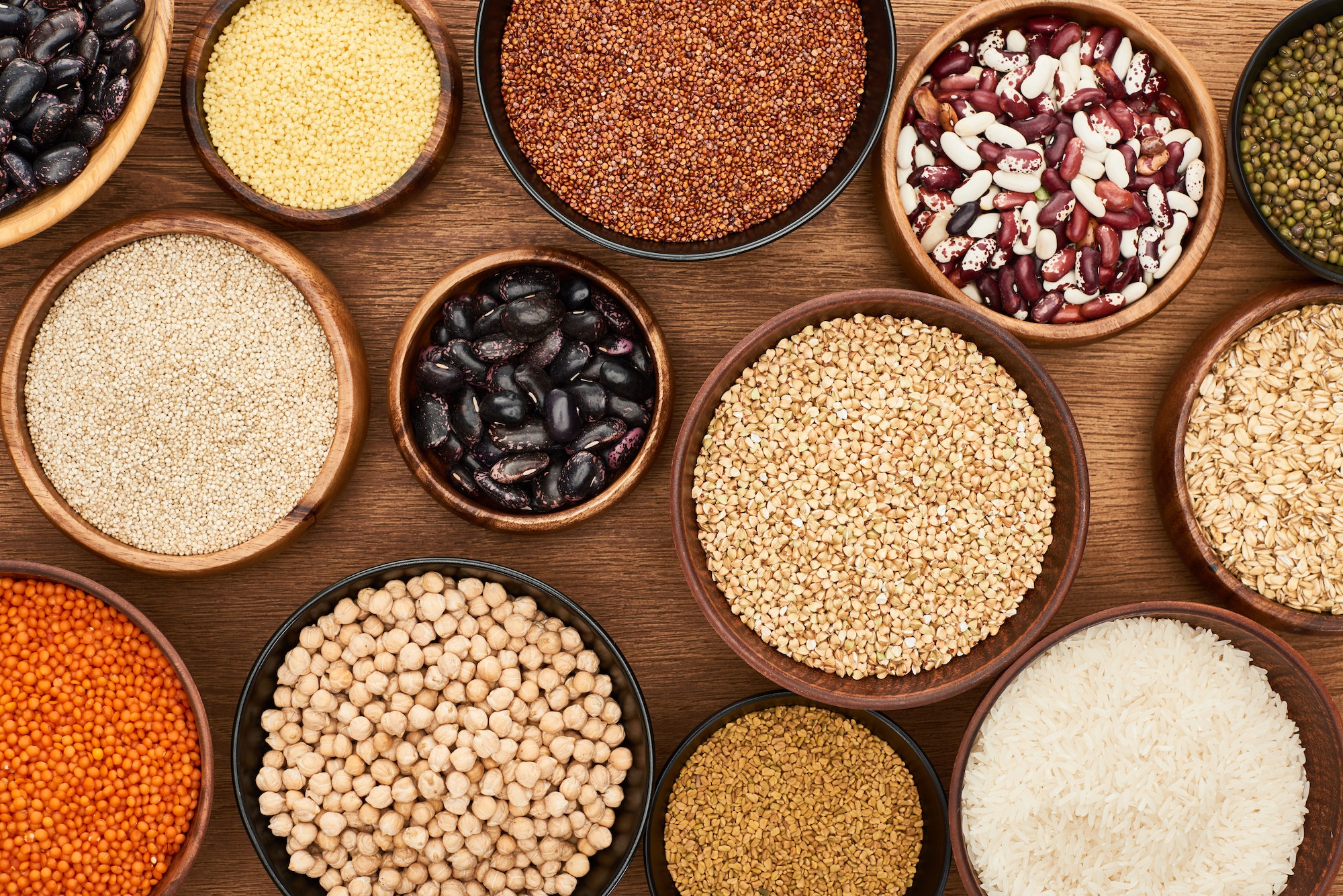We’re back again with another edition of Gut Check. This time, we’re exploring the connection between whole grains and the gut microbiome. If you’ve spent some time poking around FoodInsight, you’ve probably noticed that we’re big fans of whole grains. Diverse foods like oatmeal, popcorn, brown rice and whole wheat bread all have one thing in common: the entire grain seed of the plant — including the bran, germ and endosperm — is intact in the final product. This distinguishes them from refined grains like white bread or white rice, where processing leaves only the endosperm, the largest, carbohydrate-rich component of the grain, in the finished product. The bran and the germ are full of vitamins, minerals, a small amount of healthy fats and a good deal of fiber. When we lose those parts of the seed, the nutrients leave right along with them.
Like we mentioned in our first Gut Check post, our microbes love fiber, a vital component of whole grains. So how does eating whole grains impact our gut microbiome? Let’s take a closer look.
Our Gut Loves Grains
We humans, as incredible and talented as we are, aren’t able to digest fiber. We just don’t have it in us. Literally — we don’t have the enzymes needed to break it down. When we eat a piece of whole wheat bread or a bowl of popcorn, some components of the food are broken down in the stomach and small intestine, but fiber passes through the gastrointestinal tract intact. When it reaches the large intestine, it’s fermented by the gut microbiota. The end result of this fermentation is the production of the short-chain fatty acids (SCFAs) butyrate, propionate and acetate. These SCFAs are then either taken up by the intestinal cells themselves (which use butyrate for energy) or are delivered to other parts of the body through the bloodstream. SCFAs are thought to be beneficial for gut health because they provide our intestinal cells with a source of energy and are linked to maintaining the integrity of the gastrointestinal tract, which is important for keeping foreign invaders — like harmful bacteria — from causing infections or inflammation.
And the Research Says…
Several studies have been conducted to observe how gut microbes respond to consumption of whole grains. Based on what research has demonstrated to date, it seems likely that eating whole grains beneficially impacts the microbial profile of the gut. For example, several studies have demonstrated that consuming whole grain breakfast cereal and whole grain barley and brown rice increases the abundance of bifidobacteria and lactobacilli, as well as specific types of bacteria thought to have beneficial effects, like Roseburia and Eubacterium rectale. Increased abundance of these microbes has been associated with boosting the immune system, moderating gut inflammation and enhancing butyrate production.
However, the mechanisms behind these shifts and their impact on health are still unknown, and at times the results are inconsistent: One study showed that eating whole grain pasta and bread led to decreased inflammatory markers, lower food intake and weight loss, though no change in gut bacteria composition was noted.
On the flip side, eating a diet low in whole grains is associated with gut dysbiosis, which formally means “the condition of having imbalances in the microbial communities either in or on the body” and informally means that our microbes are not doing so hot at maintaining gut health. Dysbiosis is associated with conditions like inflammatory bowel disease and irritable bowel syndrome, but it’s not clear if the microbial imbalances led to developing the disease or if having the disease causes the imbalances. This is basically the microbiome version of, “Which came first: the chicken or the egg?”
Feeding the Microbial Masses
It’s clear that we have a lot more work to do to understand how our gut microbiomes respond to what we eat and how this impacts our overall health. However, study after study shows that if our gut microbes aren’t happy, usually we aren’t either. We can attempt to keep the peace by maintaining a healthful diet, one component of which is whole grains.
The Dietary Guidelines for Americans recommend that we make at least half our grains whole, which can be accomplished by making simple swaps like asking for brown rice instead of white rice when ordering a stir-fry dinner, choosing whole grain or 100 percent whole wheat bread for lunch sandwiches or opting for a whole wheat flour tortilla in a breakfast burrito. Experimenting with new-to-you varieties of whole grains like millet, sorghum, bulgur, or quinoa is also a great way to add variety to your diet, increase fiber intake and maintain microbial balance in your gut.
If you liked the article, check out GUT CHECK: Low-Calorie Sweeteners and the Gut Microbiome




